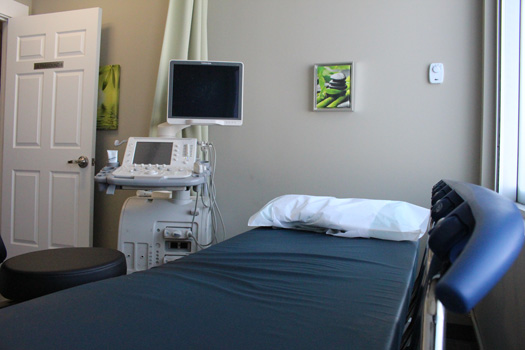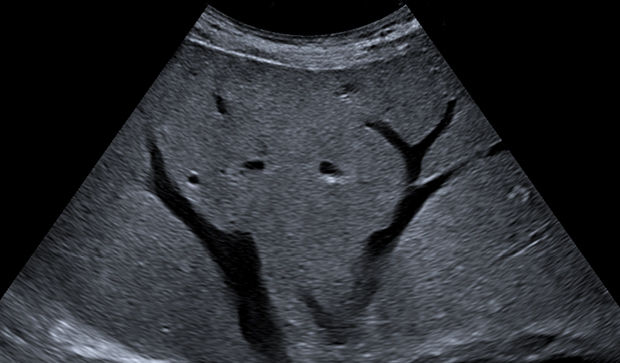Abdominal Ultrasound
An abdominal ultrasound uses sounds waves to produce images and assess organ structures within the upper abdomen. These structures include, but are not limited to, the liver, gallbladder, spleen, pancreas, kidneys, abdominal aorta, and bladder. Ultrasound of the abdomen can also help assess blood flow to organs.
Reasons for an Abdominal Ultrasound
Your doctor may order this scan to examine the abdominal aorta, as it is a major blood vessel in the human body.
The scan can look for weakening in the aortic wall and assess other health conditions, such as:
- Stomach pain or bloating
- Appendicitis
- Kidney stones
- Liver function
- Gallstones
- Blood flow blockages
- Fluid collections
- Vascular malformations
Combined Abdominal and Pelvic Ultrasound
Your doctor may request a combined abdominal and pelvic evaluation. Abdo-pelvic ultrasounds can provide a total assessment of specific systems, such as the renal or endocrine system. Since some organs are in both regions, it is logical to order imaging of both the abdomen and pelvis.
It is crucial to note that the exam preparation for a combined abdominal and pelvis ultrasound is different from the preparation for an abdominal-only ultrasound. You are only required to fast for an abdominal scan. For a combined abdo-pelvic exam, you must fast and have a full bladder.
Visit our exam prep page for more information about combined abdominal and pelvic ultrasound exam preparation.
What Happens During My Abdominal Ultrasound?
- You may be asked to change into a gown.
- The sonographer will ask you to expose your abdomen so it can be scanned.
- The sonographer will apply a warm, hypoallergenic ultrasound gel and move the transducer around your abdomen with moderate pressure, gathering images of your organs.
- The moderate pressure may be momentarily uncomfortable but should not cause any pain.
- Please inform your sonographer of any discomfort.
- You may be asked to change position – lying on your side, standing, or sitting – to move your organs into a better position for imaging.
- After the sonographer has captured enough images, you are free to leave.
- A radiologist will review the images and send a detailed report to your doctor, usually within one business day.
Orientation
During an abdominal ultrasound, you will be on a bed, on your back. Sometimes you may be asked to change position during your scan to better position your organs so the sonographer can capture high-quality images. You may be lying on your side, standing, or even sitting.
Cost
If you have an Alberta Health Care card or valid health care card from out of province, there is no cost for an abdominal ultrasound (except in Quebec).
Duration
An abdominal ultrasound scan lasts approximately 30 minutes.
Exam Preparation
Being prepared for your abdominal ultrasound helps us take the best possible images for diagnosis. Visit our exam prep page for more instructions specific to abdominal ultrasound.



